Recumbents – Can they be a bit more comfortable?
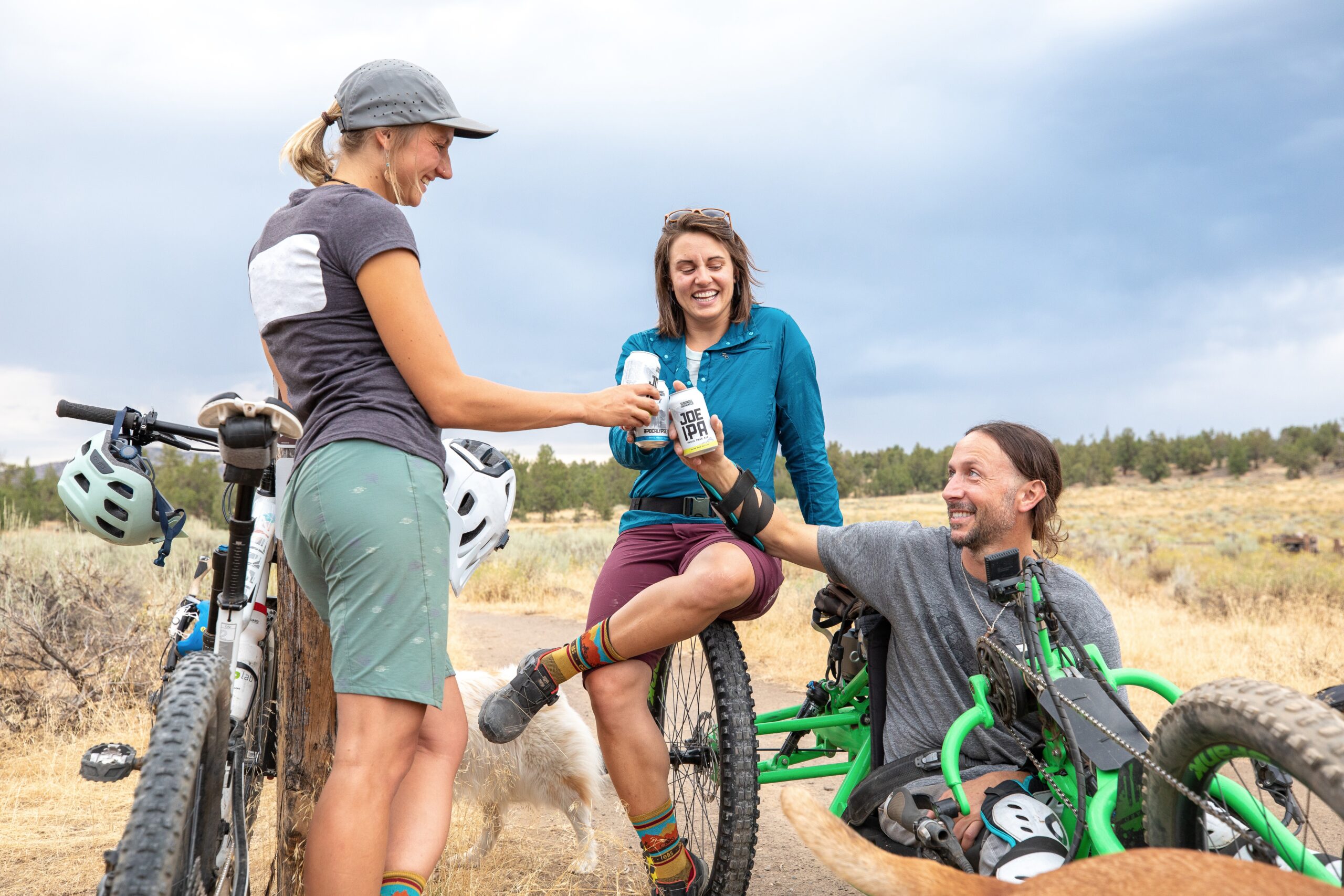
It almost sounds like an unfulfillable wish list for your bicycle dealer:
It should be very comfortable, even for hours. Optimal aerodynamics are a prerequisite and a lasting touch of cosiness. It should be much easier, lighter than conventional cycling … and with less effort, the potential buyer also wants to reach his destination faster. It should be cult and stylish, please! And would all-round protection against bad weather also be possible? Oh yes, safety should of course be a top priority, and the fun factor even more so!
An impossibility, you might think, isn’t it?
Not at all, because:
No problem, says the connoisseur, and recommends a recumbent to the discerning customer.
Those who are looking for a recumbent bike will usually be aware that these bikes differ from conventional bikes in terms of equipment and above all in terms of price, and that the price goes up – after all, you will achieve more speed with these bikes, to name just one relevant point. So very good brakes are a must.
Even the seating position can be chosen, although the inventors of the first recumbents really didn’t have it easy. It went up and down as if a lot had been deliberately modelled on the history of the two-wheeler in general – only a little more compressed. Sometimes the end threatened, then the popularity almost sank into the bottomless pit, but here too the enthusiasts and tinkerers did not give up, as always when experimental designs offer tempting potential.
The idea of a recumbent simply offered too many advantages for it to simply disappear from the scene.
What are the distinguishing features of recumbents?
At first glance, we notice the following features:
- A comfortable, backward leaning seating position.
- Instead of a narrow saddle, we sit on a comfortable mesh or bucket seat.
- The bottom bracket and pedals are at the front.
- A much longer chain as well as rear view mirrors and many variations in wheel position and number of wheels.
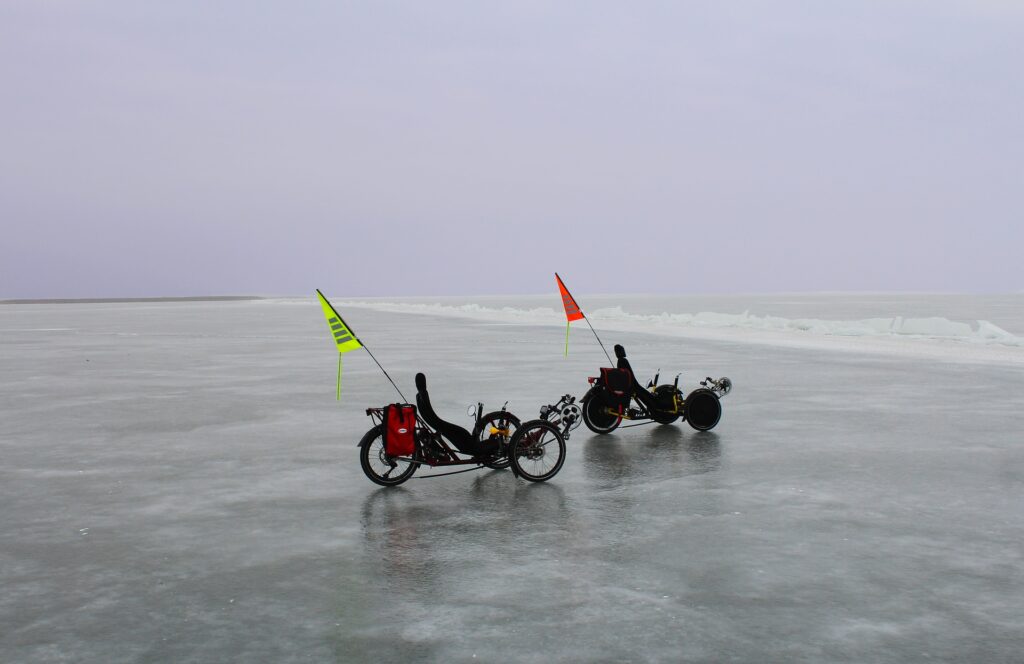
A difficult birth
The birth of the first recumbent bicycles was not an easy one. The initial ideas were put into practice in 1890 and initially attracted a relatively small following before this delicate bicycle plant suffered its first setback: since these bicycles were classified as “not suitable for competition”, further development stagnated along with interest. In some cases, curious variants were experimented with, for example, belly recumbent bicycles, before Peugeot took a big step forward by bringing the first recumbent bicycle into large-scale production in 1914.
This must have been the first sticking point, because in 1934 the UCI granted this bike model the status of a competition bike. However, despite this positive development, interest quickly declined again, and this for a whole 30 years. Only small-series models were to be found on the limited market.
It was only in the 1930s that practicality drew the attention of working-class families to this reliable companion. A recumbent was much cheaper than a car, which helped to stabilise the interest. But the recumbent still had to make it over a mountain. Energetic supporters helped it to do so …
Independent enthusiasts and the experimental Mochet, a French designer, saved the recumbent from extinction. The last mountain of a threatening lack of interest was thus overcome in 1976, after the IHPVA (International Human Powered Vehicle Association) began to promote the development of muscle-powered vehicles of all kinds. Regular competitions, for which recumbents were also eligible, were launched.
As early as 1980, recumbent bicycles gained cult status in many cities, especially in Frankfurt am Main, where they still dominate the cityscape today.
Thanks to the sporting achievements as well as various studies on the subject, this bike variant got a new boost. In the 1990s, mass-produced models could finally be offered, which gave the level of awareness an enormous boost. Thus all hurdles were overcome and the triumphal procession could be continued without any problems.
Leisure cyclists, people with health problems, but also athletes are increasingly celebrating this way of getting around. Approximately 20-30% air resistance is achieved due to the raised legs, the generally more stretched seating position and fewer braking air vortices.
What can recumbent cyclists be happy about?
For one thing, the extremely comfortable seat. For example, you can choose between a bucket seat or a mesh seat. Especially with the latter, nothing presses or chafes.
Because the centre of gravity is low, recumbents are very suitable for transporting loads. However, you have to do without a backpack and a handlebar bag. For recumbents there are specially designed bags that can be attached to the seat or to the large luggage rack.
Even in terms of repairs, recumbents are not very different from “normal” bicycles. In terms of wear and tear, they are quite comparable, only as far as special components are concerned, which we only find on recumbents, spare parts have to be requested directly from the manufacturer.
Whether for medical reasons or because you simply like it comfortable, you will enjoy more comfort on a recumbent. You also save your arms and hands, as well as your wrists. You hardly need to strain your cervical spine to get a good forward view, because the head position is only slightly tilted. All in all, you do your spine and shoulders a favour and can enjoy your tours almost without fatigue.
Due to the advantageous sitting position, doctors also recommend this type of transport. Even intervertebral discs can regenerate, and it is even possible to progress without painful pinching of nerves!
As passionate cyclists, even men with prostate problems no longer have to give up their cycling tours. In addition, irritation of the finger nerves, which can become noticeable during cycling tours on conventional bicycles through tingling or numbness, is eliminated.
By supporting your pelvis and upper body on the backrest, your power is transferred much better to the pedal crank. You do not have to support yourself with your arms or apply a counterforce, as is necessary when cycling normally. The sitting position therefore remains fatigue-free.
This is ideal for migraine sufferers as well as those who suffer from neck problems and tension. You will get your money’s worth out of recumbent cycling without having to report any complaints afterwards. Thanks to different bike versions, you can also choose your favourite here, which will certainly fit you and your needs perfectly. Make your recumbent your favourite mobile place!
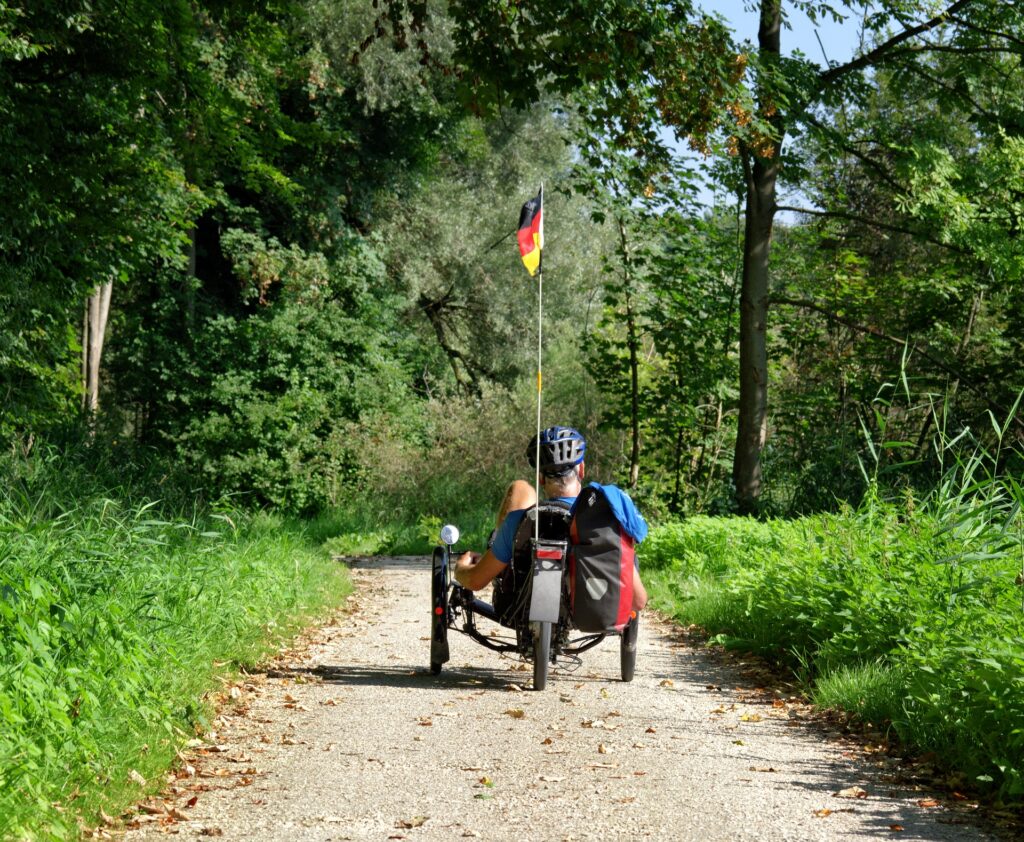
The safety factor
No matter how careful we are on the road, it is often others who carelessly cross our path. In general, we can prevent accidents by cycling with foresight and always keeping an eye on our surroundings.
If, contrary to expectations, there should be a small crash, you are offered more safety on a recumbent bike compared to a conventional bike. The low centre of gravity prevents you from skidding over the handlebars during abrupt braking manoeuvres or involuntary stops due to obstacles. The centre of gravity and extended wheelbase protect you from rollovers. In the event of a collision, your feet and legs are at the front, i.e. unlike cycling with conventional bikes, your head and spine are better protected. In addition, you are already close to the ground on a recumbent bike, which prevents a deep fall and associated injuries.
Disadvantages
After all the praise, it is now time to name the disadvantages. The disadvantages of recumbents are not insignificant and may be reason enough for some buyers to opt for a conventional bike if in doubt.
- On the one hand, it is obvious that a recumbent bike is heavier and also bulkier. Just wanting to ride over a high kerb can be a problem. Due to the small wheels and the rigid handling, you will have to ride mainly on flat roads with lowered kerbs.
- In addition, it is usually impossible to take a recumbent bike in a car or on public transport. The only chance you have in this case is with a foldable model, but even that will weigh a lot ..
- Speaking of weight: The 20-30 kilos (except for professional models, but even there you will still weigh between 8-12 kilos) might bother you during long climbs. You may therefore insist on a little helper: a motor. But the pedelec versions are unfortunately also more expensive ..
- Recumbents are only available in standard sizes. And since they are produced in relatively small numbers, you will have to pay a lot for such a bike. The price range is from at least 1000 to over 10,000 euros.
- Recumbents can only be adjusted with a few settings. For example, you can adjust your recumbent to your body size by moving the seat or boom with the bottom bracket. However, you will not be able to achieve a sportier riding position by adjusting the seat or boom.
- Overall, you will have a poorer overview of the traffic situation, as you will be sitting low down and will not be able to look over your shoulder. Only the rear view mirrors allow you to look back.
- With uncovered recumbents, a shower will hit you everywhere. Even a cape is of little help. You will soon look like a wet poodle in the rain, unless you have upgraded your bike with a streamer or a front fairing. In the end, however, only a fully clad velomobile offers real protection.
- Unfortunately, you can’t ride as sleekly as on conventional bikes. If you are willing to accept these limitations and if the advantages of a recumbent are more important to you, you will have a lot of fun with your recumbent. The decision simply depends on your personal needs and priorities. As different as everyone’s everyday life may be, so different are their views on the advantages of conventional bikes and recumbents.
- Recumbents are almost invisible to motorists behind parked vehicles, so you should always ride with extra foresight if the traffic situation is confusing or chaotic. This also applies when driving at night or during increasing twilight. Backlighting from car headlights and a low sun will blind you.
- Because of your sitting position, it is better to keep everything in your bicycle panniers instead of in your trouser pockets. Things can easily fall out of these pockets when you are sitting. The constant pedalling motion will push out purses and other contents if you have not secured your pockets with a fastener.
- If you want to use a recumbent with only two wheels, you will not be able to balance difficult ground conditions. The small wheels also make it difficult to ride on slippery or very uneven surfaces.
Types of recumbents
In short, one can roughly distinguish between the following types of recumbents: There are low, long and short recumbents as well as the chair bike.
In between we find numerous variants, for example with front or rear wheel drive, but also recumbents with and without bottom bracket elevation, with steering systems in front of the rider or under the seat. The steering variants also differ in direct or indirect steering. In addition, there are special inserts and refinements with regard to frame construction.
Several variants are also available with motor support, which hardly affects the driving behaviour because the centre of gravity is very low anyway. Those with health requirements can also look forward to subsidies from their health insurance company.
The details:
Short riders/articulated handlebars: Thanks to their compact design, they are wonderfully compact. The wheelbase is short and you use the front wheel(s) for propulsion. Steering is by weight shift.
Armchair bikes: Typical features are a high seat, the upright backrest with top handlebars, which makes them very comfortable overall. However, power transmission is not very favourable, so this type of bike is preferred for shorter tours.
Longitudinal bikes are recumbents with a longer wheelbase, where the bottom bracket is located between the wheels. Although you can enjoy the pleasantly quiet ride, you do not have a great deal of manoeuvrability.
Low rider: This variant is ideal for longer tours. With a very low seating position, it is also extremely streamlined, which is why it is suitable for a sporty riding style.
We also distinguish between two-, three- and four-wheeled recumbents. Three-wheelers are also called trikes. You can choose whether you want two wheels at the front or two wheels at the back. Three or four wheels are the best in terms of safety and make it easier to get on and off the bike.
If you want to be perfectly protected from wind and weather, it’s better to go for a velomobile. Fully covered, you can use them for long tours, but also for commuting. They are also one of the most expensive types of bike.
Other model types are:
Recumbent tandem (also as a step variant), rowing tandem and belly tandem.
There are different types of steering. A distinction is made between:
Top handlebars: The handles are placed above the seat, in front of the chest.
Tiller: This type of handlebar describes a T-shaped handlebar in front of the rider’s chest. To make it easier to get on and off the bike, these are not only available in a rigid version, but also in a foldable version.
UDK: Simply means “around the knees”. This aero handlebar is arranged in an arc at the height of the knees.
Lower Handlebar: Such a handlebar is operated by side grips.
Armoured steering: The front wheels are each steered by steering levers. The levers are located on the side of the seat.
Our conclusion
Recumbent bikes provide a comfortable way to get around and offer new challenges even to ambitious athletes. Whether for health reasons or for ambition, they fulfil individual wishes and let us enjoy nature in a comfortable way and experience everyday life in a new way.
Have we made recumbents more appealing to you or helped you make your choice? Then you, too, can take up your favourite mobile place in the open air!


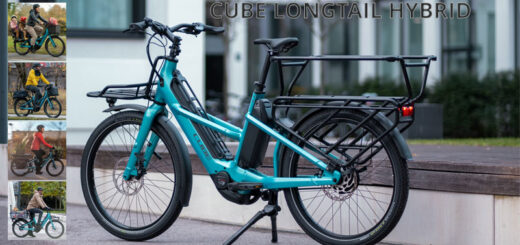
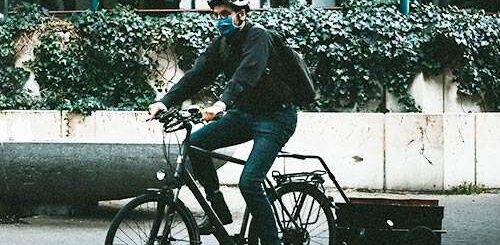









Recent Comments